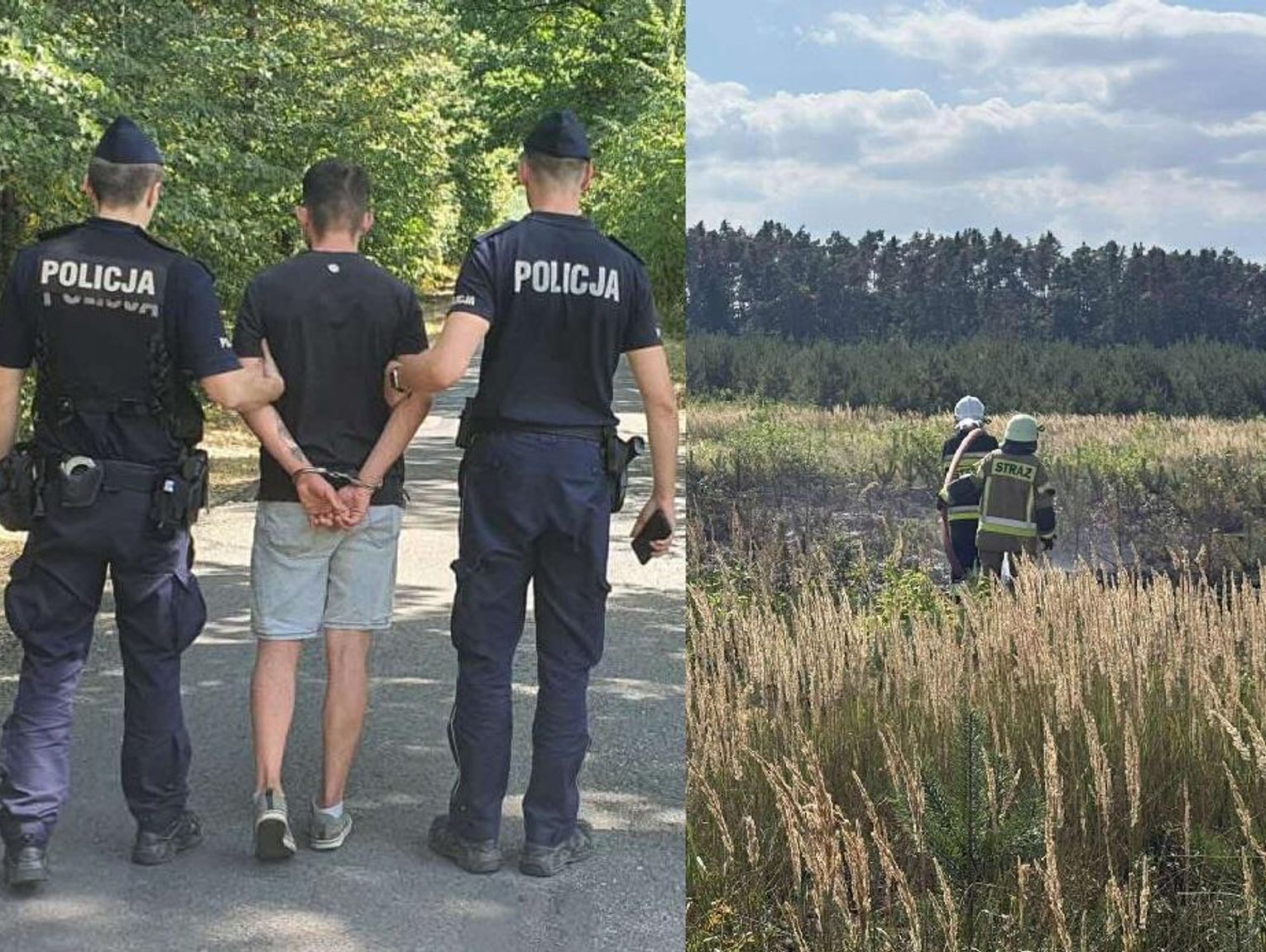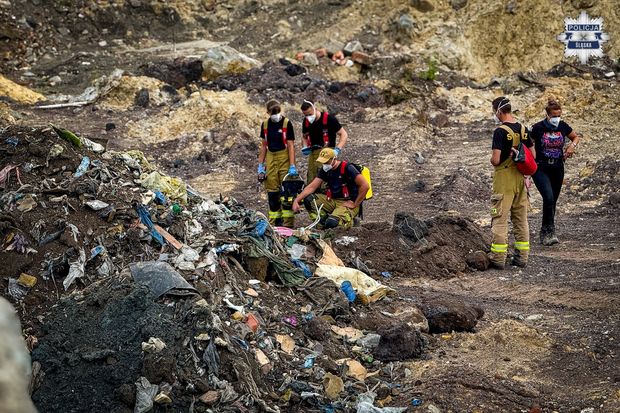
Władysław Pillar
"BURZA" OPERATION IN VOLIN. Establishment, conditionality
And it's an action.
The improvement of the Polish underground of independency in Volyn and the creation of the 27th Volyn Infantry Division of the AK took place under peculiar conditions: national antagonism fueled in this area by the occupiers, political conflict for these lands, a serious weakening of the Polish potential, the ruthless panic of the occupier and the actions taken by Ukrainian nationalists to exterminate the Polish population. Volyn was an highly hard area to carry out conspiracy work, where various political forces pursued their objectives. During the 2 years of the russian occupation, the Polish possible was seriously weakened "The Volyn was stripped of political and leadership elites capable of taking up independence. The German business brought the turbulent improvement of the Ukrainian nationalist underground, which, having large freedom of action, developed a wide anti-Polish activity. Since 1942, troops of russian partisans operating not only diversional-sabotage actions against the German occupier, but primarily carrying out tasks related to preparing the site for the return of russian authorities, have appeared in Volyn. Thus, building the structures of the Polish underground state in this area and their operation were highly difficult.
In September 1942, the AK office (KG AK) appointed Colonel Kazimierz Bąbiński (ps. “Luboń”) as Commandant of the Volynski District.[1] On 21 November 1942, Kazimierz Banach (ps. “Jan Linowski”) arrived in Volyn and took up the function of the territory Government Delegate. During January and February 1943, teams of 20 officers assigned to conspiracy work were sent to Volyn, and in March 1943 Colonel Kazimierz Bąbiński "Luboń" arrived in Kowl, setting up the office of the AK Volyn territory staff. As a consequence of intensive organizational work in 1943, there was an intensive improvement of the conspiracy in Volyn. 4 regional inspectorates have been created covering 12 circuits, namely: the Inspectorate of the AK Kowel (Koźnia, Gromada) with the Kowel and Lubomel circuits; the Inspectorate of the AK luck (Łuna, Osnowa) with the Łucki, Włodzimierski, Kiwerski and Horochowski circuits; the Inspectorate of the AK Dubno (Dąbrowa) with the Dubno and sielieniecki circuits; the Inspectorate of the AK Rowne (Browar) with the Rivian, Dołbunowski and Kosopolski circuits. In addition, the autonomous territory of AK Sarny (‘Staw’) comprising the Sarne territory was separated and subjected to the Inspectorate of AK Kowel. At the end of 1943, the Volynski territory already had a well-organized conspiracy grid of about 8,000 sworn soldiers of the AK.[2]
The tasks of the Volynska territory of the AK envisaged for the period of the uprising were limited, due to the fact that the anticipation of mobilising more forces here was not counted. Rather, tactical and operational considerations advocated directing the main effort towards the direction of Lviv and Vilnius. The territory of AK Volyń was left with only a shield of the uprising from the east by undertaking diversion and guerrilla action on its territory. Meanwhile, the course of events brought another solution. The 27th WDP AK was formed in Volyn, with 2 regimental groups, divisional services, quartermastership, wellness care and auxiliary units, operating for six months as a compact and organized tactical union. 27 WDP AK the first in the country started implementing the plan "Burza". It had a different dimension and course than the subsequent activities of the AK branches in another areas of Poland, mainly due to conditions, momentum and duration.
At the end of 1943, the east front was rapidly approaching the borders of the II Republic. On 4 January 1944, russian troops crossed the erstwhile Polish-Soviet border in the Rokitna area. Volhyń became a direct base of the German front, more and more troops and logistics units arrived here, the evacuation of the German administration began. In this situation, the commander of the AK Volyń territory decided to start implementing the “Burza” plan. On January 15, 1944, the Regional Inspectors were given an order ordering the mobilisation of the AK's underground troops and directing them to the concentration area in the western part of Volyn. The Polish self-defense area in Zasmyki, located south of Kowla and the self-defense area in Bielin, located north of Włodzimierz Wołyński, was designated as the collection site. In these areas, self-defense and guerrilla troops “Jastrzębia”, “Sokolo”, “Petersia” and “Korda” have existed since mid-1943. Military troops were formed from mobilized conspiracy soldiers and members of self-defense and were combined with guerrilla troops that had already operated in the field. As a consequence of the mobilization in the areas of concentration of the armed forces of the AK Volyn District, more than 6.5 1000 soldiers were put under arms ready to take combat action against the Germans, which represented 21% of the overall state of the territory forces.
According to the plan to reconstruct the armed forces in the country by The Ordre de Bataille of peace and dislocation of units prior to the mobilization of 1939, on 28 January 1944, at the briefing of the officers of the staff in the village of Suszababa, the decision was made to establish the pre-war 27th Infantry Division, which was shortly called the 27th Volyn Infantry Division of the AK.[3] The division's organization referred to the pre-war traditions of the 27th Infantry Division, the 13th Infantry Division and the Volynian Cavalry Brigade. The erstwhile regiment numbering was preserved. 2 regimental groups were organized out of the above conditions: the Kowelski p.k. “Gromada” and the Włodzimierzeski p.k. “Osnowa”.
Major Shatowski ‘Kowal’, ‘Zagończyk’ was the leader of the group ‘Gromada’ and at the same time 50 pp. A platoon of gendarmerie and staff protection, sapper platoon, reconnaissance platoon, anti-tank squad and quartermastership were formed at the office of the group. The group included: 3 battalions of 50 pp – “Sokolo”, “Jastrzębia” and “Trzeska”, 2 battalions of 43 pp – “Korda” and “Siwe” and a squadron of 21 regiments of Nadwiślanów “Hińczy”. In total, the group had a full of 3074 soldiers, including 56 officers, 314 officers and 2704 Privates.
Captain Kazimierz Rzaniak “Garda” was appointed as the leader of the group “Osnow” and at the same time 23 pp. A platoon of gendarmerie and staff protection, bomb squad, communications platoon, reconnaissance platoon and quartermastership were formed at the office of the group. The group included: 2 battalions of 23 pp - “Bogorii” (and from 8.4.1944 “The Hare”) and “Lecha”, a battalion of 24 pp “Luna”, a separate company “Sokola II” and 19th regiment of “Jarosława”. The group had a full of 1946 soldiers, including 31 officers, 229 enlisted officers and 1686 Privates.
About 600 AK soldiers, and about 2500-3500 conspiracy troops for various reasons did not scope the concentration area.
The division's organization lasted until March 1944 and was held under circumstantial conditions. The mobilized troops were exposed not only to attacks by German troops, but besides to UPA troops, whose large groups were located in large complexes of wine and mosur forests and in forests located on the left bank of Stochod. In order to grow the operational base to activities against Germany, a number of actions were taken against UPA troops. Between January and March 1944, as part of activities to grow the operational base, the “Gromada” and “Osnowa” groups carried out 16 major combat actions against UPA groups. Thus the threat of the Polish population gathered in the western part of Volyn was removed, conditions were created to form armed troops and make them in the fresh organizational structure of the division. The operational base area has besides been expanded, making the division free to manoeuvre and to fight Germany.
During the period of formation and organization of the division, which lasted from January to March 1944, the tasks related to the defence of the Polish population against attacks of OUN militias and UPA troops were the advantage. This was due to the fact that the mobilization and organizational work related to the creation of the division was carried out at the time erstwhile the massacres of the Polish population by the CNS-UPA took on a massive character, and the disorganization of the occupying administration reached its peak. At the same time, the formation of divisional troops led shielding and defensive actions against German troops, mainly from the garrison in Włodzimierz Wołyński, which sought to identify the situation in the field. Due to the safety of the Polish population's civilian division gathered in the area of civilian formation, which was in peculiarly hard conditions and threatened by Ukrainian nationalists, the command of the division did not take diversion action against the Germans (only 1 attack was carried out on Hoby from 8 to 9 March 1944). It was tried not to let Germans to admit Polish forces, focusing primarily on the shielding of mobilization and formation of divisions. This was an highly crucial task, due to the fact that the Germans taking up more pacification action in the first period of formation of the division, with a good designation of the Polish forces, could have led to the demolition of Polish troops, not yet full organized and deprived of external assistance.
Already in the first phase of action, in early March 1944, divisional command established communication with the command of the regular russian army. As a consequence of the negotiation with the russian Army's command, the principles of tactical cooperation were established in the fight against the Germans. russian Command has agreed to respect the organisational separation of the AK branches, recognising that it is simply a Polish division which has its authorities in Warsaw and London.
The first fight, which was fought in cooperation with troops of the russian Army, was a hit on Turkod on 20 March 1944. This event was noted in a radio dispatch sent by the Home Army commander to the Chief Leader in London: “On 20.III, our guerrilla troops captured Turkod (southwest Kowla) while protecting the confederate wing of russian troops, winning Turkod railway station. 3 kb spanc., ckm, handguns and 30,000 ammunition were captured.”[4] Another action, carried out as part of the arrangements with the Soviets, was to take over the village and Turopin railway station and the railway bridge between Turopin and Owadne. The attack on Turowin and Turopin started an open fight against the German occupier by troops of the 27th WDP AK. It interrupted Kowla's railway connection with Włodzimierz and secured the confederate wing of russian troops attacking Kowel. For the division, it created an chance for troops to decision westward, and this movement was inevitable due to the approaching front.
In accordance with the pre-cooperative conditions established with the command of russian troops, the division at the end of March 1944 regrouped to the western bank of the Turia to the area bounded from the east by the row Turia, from the west by Bug, from the north by the Dorohusk-Kowel railway line, and from the south by the Hug-Włodzimierz Wołyński road. After regrouping, the division was placed in the position of the westernmost, in the russian military's region of action, and took part in the Kowel battle. The task of the 27th WDP of the AK consisted of: tying German forces to the southwest of Kowl in the Turkod region, Olesk, Luboml, Zamłynie and Sciług, Włodzimierz Wołyński; maintaining communication and crossings through Bug; conducting the designation of German movement (especially on the Lublin - Luboml - Kowel railway line). An attack was besides planned, consisting of the execution of strokes on the Luboml-Kowel communication line, and in favorable conditions besides in the confederate direction for blocking the Włodzimierz Wołyński-Uściług road.
On 2 April 1944, the division battles began with regular German units from the fighting at Sztun and Zamłyń. The division's actions were a front action, although it was not a tactical union of the regular army. In the first phase of the fighting, her troops successfully conducted defensive-bound actions against the more many and better armed German units, utilizing a wing and rear maneuver. The final focus of these actions was to effort to take the initiative on 12 April by performing a return which was attached simultaneously to Lubomla and Włodzimierz. Following the introduction of fresh forces by the enemy (including 5 DPanc. SS “Viking”, 214 and 131 DP), as a consequence of the unfavorable course of the fighting, the division threatened the lap. russian Command did not agree to retreat troops of the 27th WDP AK to the Turia line and take up defence there. The division, left in the mass of mosurian, herblic and abzarite forests without any support from the regular russian army, led dense defensive battles in the lap from 13 to 19 April 1944.
On 18 April 1944, Colonel Jan Wojciech Kiwerski "Oliwa" commander of 27 WDP AK died in the area of the farm. Soldiers, exhausted by more than 2 weeks of activities under Luboml and Vladimir Volynsky, were incapable to fight for a long time against the opponents' units, which had method and numerical advantage. The only way out was to break through beyond the lap ring. After careful analysis of the situation and consideration of the various options, it was considered that the direction giving the top chance of breaking through was the northern direction through Zamlyna, Ja hours, leading to the rear of the German troops. The crossing behind Bug could not be taken into account due to the order of the AK office ordering to stay on Volyn.
On 20-22 April 1944, the division broke through from the lap heading north to the forests above the advanced Pripytia. After the defensive conflict under Sokoł and Holadyn, the division began to march eastward on 25 and 26 April 1944, and reached the Szack forest complex on 28 April. Here it was decided to stay longer to give remainder to exhausted troops. All the rolling stock, dense equipment and infirmary with injured people were left in the lap area. In combats carried out as part of the Kowel operation, which lasted continuously for more than 3 weeks, the division suffered large losses: 349 soldiers (including 120 killed while crossing from the lap), 160 were injured, 170 were taken prisoner (including 90 of the field infirmary seized by Hungarians), about 1600 were dispersed.[5] Despite these losses, the division was not broken. After leaving the lap, her basic core counted about 3,600 men under arms. About 500 soldiers who were incapable to break through the lap took the fight and joined the division already in Lublin.
Exit from the lap of the troops of the 27th WDP AK and their passage into the sack forests was no secret to the Germans.[6] The division was located in the immediate back of the front between the first German line of defence moving from Wyżwa Nowa, along the row to Ratna and further along Prypeci, and the second line moving from Szacka through the towns of Piszcza, Oltusz to Małoryta. From the first days of May, reconnaissance aviation was active, which patrolled the sage forests. The revived activity of German and Hungarian patrols was besides observed, which, coming out of Szack, Zabłocie and Huta Ratneńska, penetrated the area in the day, approaching the Szack forests.
Since mid-May, the German ringing around the sash forests, in which the 27 WDP AK stationed has been increasing.[7] German aviation continued to conduct reconnaissance flights over the forest complex, shelling from on-board weapons and bombarding spotted areas of troop deployment. At dawn on 21 May, supported by tanks and artillery fire, the German attack on the sack forests simultaneously began from respective directions: Mielnik, Szacka, Kropiwnik, Zabłocie and Ratneńska Huta. As a consequence of the operation, which utilized crucial infantry, artillery, tanks and aviation forces, the Germans pushed troops of the 27th WDP AK and troops of the russian guerrilla to the northern part of the forest into an area of about 4 sq km. On the evening of May 21, at a briefing with the commander of the 27th WDP AK, it was assessed that further fighting on the direct back of the German front, in the absence of supplies, was impossible. Since there was no licence to leave Volyn, it was decided to go behind the front to the russian side. It was decided to break from the lap north-east to the Divina area, from where the Prypeci were to be forced (along which the German-Soviet front line ran), and then a jump to the Police area located southeast of the Koširski Stone. On the night of 21 to 22 May 1944, troops of the 27th WDP AK went beyond the ringing of lap, defeating extended swamps not filled by the enemy. Apparently, the Germans found this area to be impenetrable during the spring period.
On 27 May 1944, an effort to break through the front line to the Pripeci took place by the “Gardy” group, with large losses of about 40% of the state. About 120 people died in Pripeci and 114 soldiers were wounded.[8] After this tragedy, the Blacksmith group turned back and headed west towards the Bug. On the night of 9 to 10 June 1944, divisional troops crossed Bug simultaneously at 4 crossing points and headed south-west by a fortified march reached the area of Parczewski Forests from 17 to 20 June 1944. The stay in this area was primarily utilized for rest, order and training.
15 July 1944. Germany launched a large pacification action under ‘Wirbelsturm’ (‘Cyklon’) against troops grouped in the Parczewski forest area. On the night of 17 to 18 July 1944, the division broke through the tightening ringing of the lap and entered the Czechia forest complex. Here in the last decade of July 1944, in Lublin, for the second time she took part in “Bury”. On 21-22 July 1944, she occupied Firlej, Kamionka, Lubartów, Kock, Michów, mastering an area of about 180 sq km. In this way the direction of German troops moving from Lublin to Łuków was blocked. russian units of the 29th Guarded Infantry Corps of the 8th Guarded Army of the 1st Belarusian Front entered the area occupied by the 27th WDP. At a gathering with the russian army commander, further actions of the division were agreed, which was to operate in the direction of Warsaw together with the russian corps. alternatively of continuing the joint fight against the occupier, the 27th WDP AK was insidiously disarmed under Skrobów on 25 July 1944.
The 27th WDP AK was the largest guerrilla unit, which operated continuously from January 1944 to July 1944 as a compact and organized tactical union. She initiated Operation “Burza” and implemented its assumptions in Volyn and Lublin for the longest time. It was a circumstantial phenomenon in the Polish guerrilla movement. In conducting six and a half months of persistent fighting, she over 600 km. On her conflict trail, in more than sixty major battles, she suffered losses of: 626 dead, about 400 wounded, 195 captured, and 1320 missing. This represents 42 % of the failure compared to the first state of the division.
Combat actions 27 WDP AK did not receive due designation in the post-war 60-year-old. Division battles have not been spoken or presented in false light. Therefore, today, after 70 years we return to these events, so that this modest part of the past of fighting for Poland's independency is not forgotten.
[1] National Army in Documents, Vol. II, p. 471.
[2] Józef Turowski, Pożoga, Warsaw 1990, p. 33.
[3] It is the day of the formation of the 27th Volynian Infantry Division of the AK, but its organization continued throughout February and March 1944, as the partisan troops of the AK and the recently formed ones of the conspiracy, operating since 1943, required reorganization and consolidation in the fresh organizational structure. (The relation of Major Jan Shatowski "Kowala"; also; J. Turowski, Pożoga, Warsaw 1990, p.152).
[3] . (J. Turowski, op,cit.s,149; also: Cz. Piotrowski, Military and historical traditions of the 27th Volyn Infantry Division AK, 1993, p.47).
[4] AK Commander-in-Chief, L. d. 2694/jn. of 29 March 1944, Polish Armed Forces in the Second planet War, Vol. III. National Army, London 1950, p. 589. See besides M. Fijałka, 27 Volhyńska Infantry Division AK, Lublin 1981, p. 93. Conspiracy "Information Bulletin" No. 13 of 30 March 1944 in the study of Mr. National Army in the fight reported: "On 20 March, the guerrilla troops of the AK captured Turkow on the Kowel-Włodzimierz railway line. 3 anti-tank guns were captured, 4 ckm, 8 rkm, 30 1000 ammunition, equipment and equipment - without any failure of their own.”
[5] J. Turowski, op. cit. p. 353.
[6] In the Feinlage (Banden) study no. 425, Anlage zum Lagebericht Ost nr. 3812 von 13.5.44. we read: "According to the evidence of the prisoners, the Polish large band in the strength of 4000-5000 people, under the command of the Polish Major “Oliwa”, is located in the forest area of the south. number (45 km southeast. Brest). Polish brigade “Oliwa” (?) (Z 140) of the Lt. Malaryt (45 km south-east. Brest), force according to the evidence of prisoners 4000-5000 people, Polish commander Major Oliwa, Deputy Major Kowal.” and in the study Feinlage (Banden) No. 426, Anlage zum Lagebericht Ost nr. 3813 von 14.5.44: “According to the condition of 13.5.44. in the area of Maloryt, the presence of the "Oliwa" brigade (formerly Z 140) was confirmed, it received the G 33.” (WIH Archives, No. VII/1/158 Part II, German Army OKH (T-78).
[7] German papers confirm this. Feinlage (Banden) No. 433, Anlage zum Lagebericht Ost No. 4071 von 21.5.44. reads: "On the north side of the zech. The kowel ringing of the band's lap is getting closer and closer, more attempts have been made to escape bandits." (WIH Archives, No. VII/1/158 Part II, German Army OKH T-78).
[8] J. Turowski, op. cit., p. 402-403. Among the fallen were erstwhile officers: Lieutenant Władysław Cieśliński “Piotrusz”, Lieutenant Bronisław Byschej “Czech”, Lieutenant Stephen Jasinski “Czesław”, Lieutenant Władysław Anuszkiewicz “Samson”. Despite diligent searches, the commander of Captain Kazimierz Rzaniak's "Gardy" column was not found, although he was seen on the russian side. A list of wounded was drawn up by Sgt. Andrzej Ponciliusz ps. “Grif”, adjutant Lieutenant Sigmund Górki-Grabowski “Zaja”, commander I/23 pp. (Archive 27 WDP AK).
















